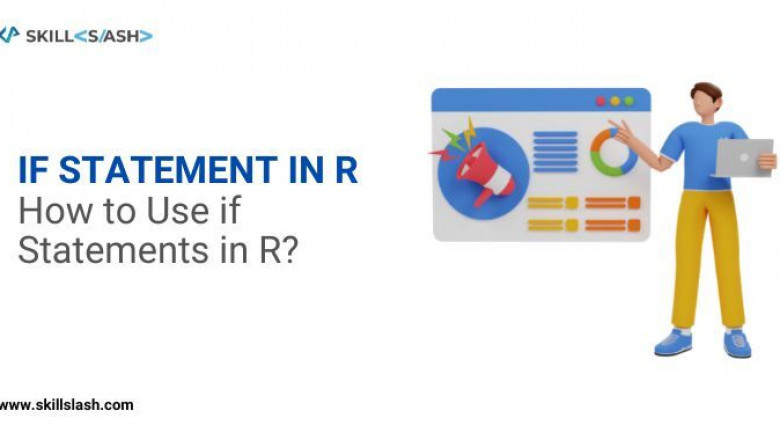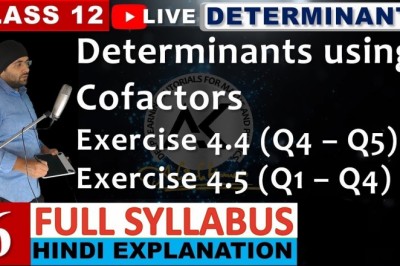views

The foundation of the software business is the languages used to create its programs. Programming languages are used to create everything from computer games and websites to machine learning models.
R is a fantastic programming language used for statistical computing and graphical representation. It included a wide variety of statistical tools, from basic hypothesis testing to more advanced techniques like clustering and time series analysis and linear and non-linear modeling. This article will discuss the if statement in R and its role in conditional programming.
The if statement is one of the most popular and useful statements in R. It allows you to execute a certain code if a condition is TRUE, and another code if the condition is FALSE.
What is an if Statement in R?
An "if statement" is a programming conditional statement that allows for different actions to be taken based on whether a specified Boolean condition evaluates to true or false.
In R, the general form of an if statement is:
if (condition1) {
statement1
} else if (condition2) {
statement2
} else {
statement3
}
where condition1, condition2, and condition3 are logical expressions that can be either TRUE or FALSE, and statement1, statement2, and statement3 are R code instructions that will be executed if the corresponding conditional expression evaluates to TRUE.
Different Types of if Statements in R
There are three different types of if statements in R:
1. If the condition is TRUE, do something
if (condition) {
statement
}
2. If the condition is TRUE, do something, else do something else
if (condition) {
statement1
} else { # Note the indentation! This line must be at the same level as the "if" line
statement2 # When using an "else" statement, there can only be one "statement" after the "else" keyword! You can't have multiple lines of code here. }
# The curly braces are not required when there is only one statement to execute for each branch
# but they are good style and make your code easier to read. It's also easier to add additional statements later if you use curly braces.
3. If the condition is TRUE, do something, else if another condition is TRUE, do something else
if (condition1) {
statement1 # Again, note the indentation! All of these "statements" must be at the same level as the "if" and "else if" lines }
else if (condition2) {
statement2 }
else { # The final "else" in an "if...else if...else" construct does not require a condition because it will execute
Writing an if Statement in R
If you want to write an if statement in R, you first need to understand what an if statement is and how it works. An if statement is a programming construct that allows you to execute a certain set of code only if a certain condition is met. For example, you might want to execute a certain block of code only if the user input is greater than 10. In this case, the condition would be "if (input > 10)".
If the condition is met, the code inside the if statement will be executed. Otherwise, the code will be skipped.
It's important to note that an if statement must always have a corresponding else statement. The else statement defines what should happen if the condition is not met. Without an else statement, the code inside the if statement would simply be skipped and nothing would happen.
Now that you understand how an if statement works, let's take a look at how to write one in R. The syntax for an if statement in R is as follows:
if (condition) {
Code to be executed if the condition is TRUE
} else {
Code to be executed if the condition is FALSE
}
As you can see, the syntax is very simple. First, you specify the condition in parentheses after the word "if". Then, you write the code that should be executed if the condition is TRUE inside curly brackets {}. Finally, you write the
Pros and Cons of using if Statements in R
There are both pros and cons to using if statements in R. On one hand, if statements can be very useful for making decisions based on data. For example, if you have a dataset with two columns, one for income and one for expenses, you could use an if statement to calculate whether each person in the dataset is saving money or not. On the other hand, if statements can also make code more difficult to read and understand. In addition, they can sometimes lead to errors if they are not used correctly.
Conclusion
We reach the final parts of the article, having discussed the if statement, different types of if statements, and how to use it in R. If you are interested in making a future in the tech or IT domain, data science, and full stack development are the latest buzz in this field. As far as making a successful career in them is concerned, Skillslash can help you do that with its Data Science Course In Hyderabad with a placement guarantee and Full Stack Developer Course In the Hyderabad program. You may contact the student support team to know more.












